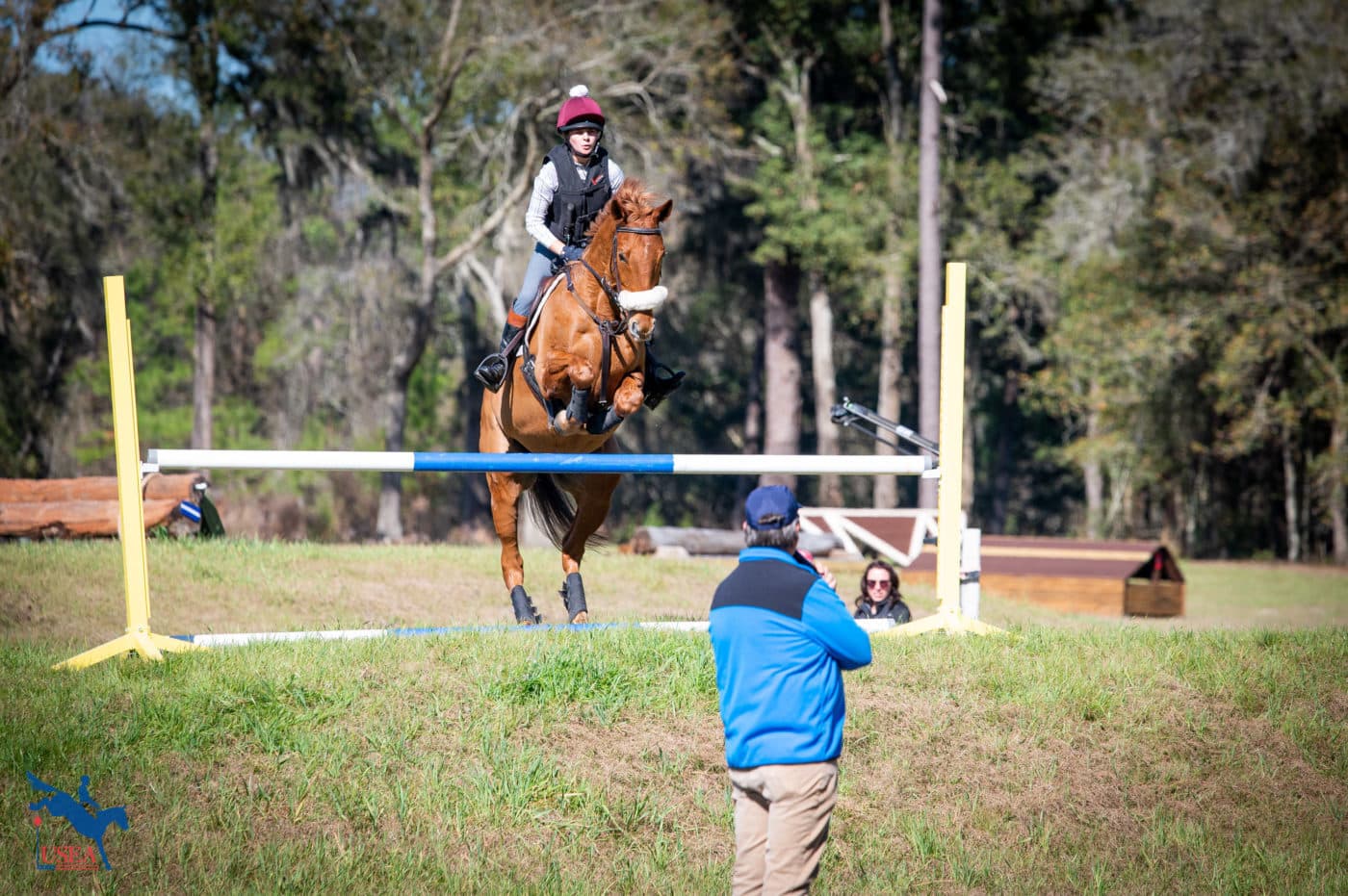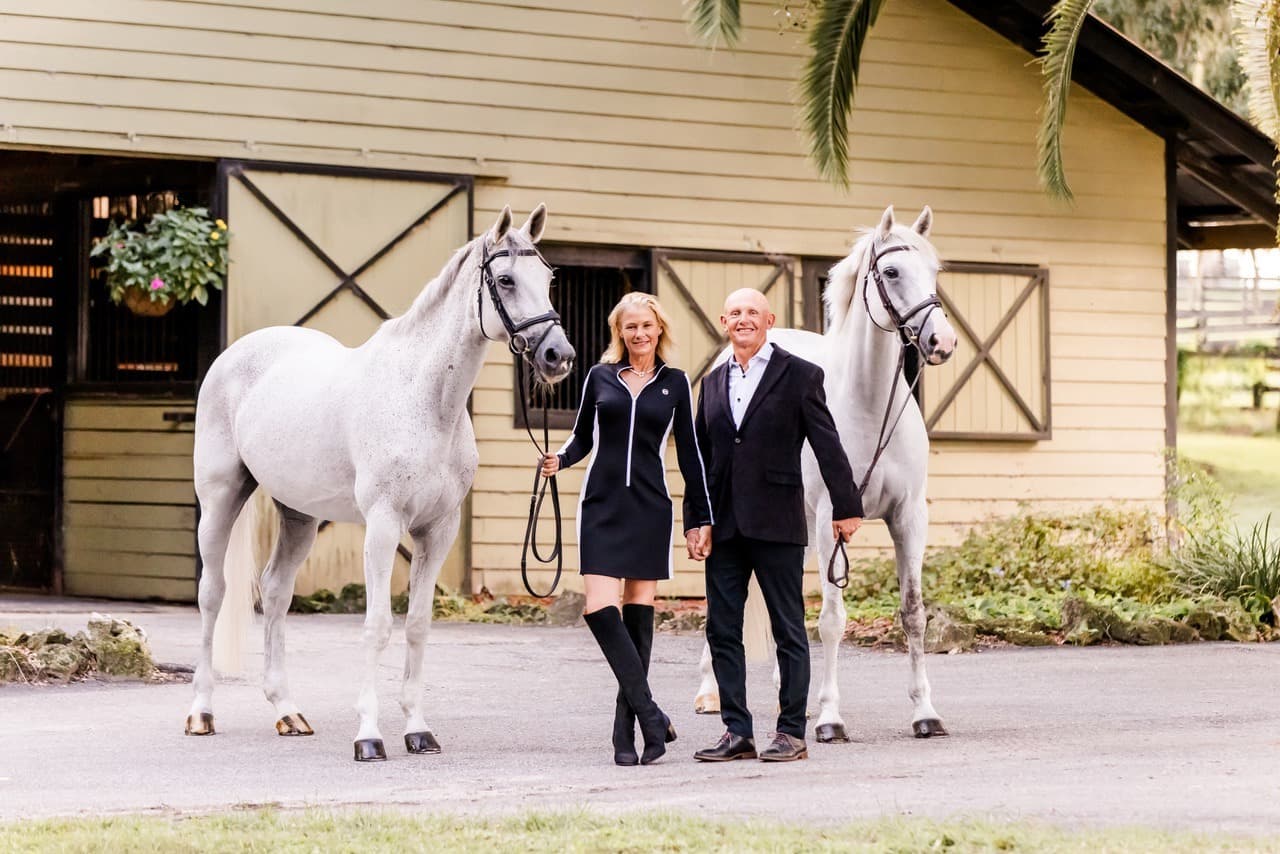Cross-Country Design for Coaching with ECP Instructor David O'Connor

Cross-country riding is one of the highlights of an eventer’s competition life and certainly the center of an eventer’s experience. So, what does it take for someone to learn how to make cross-country fun, safe, and challenging? Can you teach techniques that someone can learn these traits? This is where a coach can, and should, separate the techniques and make sure there is understanding of the requirements from the rider and the horse that are needed to accomplish that goal of a successful cross-country ride, at the level desired.
It is very important for the coach to set appropriate exercises that end up teaching the skills needed for not only the different levels, but the different types of exercises found on a cross-country course. They need to be able to jump a fence at different speeds which is a necessary part of the levels of the sport. The lower-levels have less of this need. and the upper-levels demand having several different speeds to have to successfully jump an exercise.
It is important to have a basic understanding of course design in order to teach the skills necessary. To teach a rider to gallop fences, it is appropriate to not use a vertical-faced fence to teach that skill!
To start, let’s talk about ground lines. Every fence jumped in a schooling/teaching environment needs to have an appropriate ground line. If a rider makes a mistake, which will happen, you want the horse to be able to handle that mistake and not get too close to the fence where it could cause further trouble. A ground line rolled out to minimum 18“ will help a lot. Ground lines can be solid (rails, etc.) or flexible (flowers, etc.) I would encourage anyone to look up the USEA Cross-Country Course Design Guidelines that the USEA has on their website or the FEI website Inside.FEI.org.
It is important that we teach the ability for someone to learn to gallop an individual fence where they must balance without changing the speed. If available, putting several fences in a long line can help teach this skill. These fences should be at least 120'-150' apart so someone can practice the skill of galloping, preparing, and then galloping again. Start slow and then build the pace up. These fences should be easy and inviting (roll tops or big logs). Make sure that the fence has plenty of ground line, 18”- 2’, to encourage a good jump. Having at least three, or better four, of these in a row really can teach this skill well.
When teaching combination skills to the riders it is recommended that the strides between fences are at a higher number. At least five or six strides through 40-60 degrees turning is preferable at the beginning levels to give time for a rider to recognize and react to the things that are happening underneath them. Remember that we are trying to teach rider skills in this thought process. These distances and adding turning questions should progress through the levels. Again, there is a good progressive plan on the FEI guidelines for cross-country. At the beginning (Training level), it recommends that in seven strides a combination could be set up with a 90 degree turn, for example.
Color is also important for horses to understand the questions asked. Horses can see some color, and certainly can see contrast, but their range of color seen is different than that of a human. The big one to remember is that they see red and yellow as the same color. These are colors, especially red, that are used often on the cross-country. Make sure that the color does not blend into the surrounding ground, especially in the winter when the grass is dormant, and the grass is brown or light tan. Suddenly a fence that you have been jumping all year blends into the surroundings in a different season. A fence painted different colors with a light color on top is preferable.
Make sure that there are no leading edges that are in front of the plane of the front face of the fence. This is an easy place for a horse’s knee to get hooked on when getting too close to a fence.
All portable fences MUST be staked to the ground to prevent them from moving if hit. This is an absolute necessity. Fences that move when struck can cause an accident and make an outcome so much worse, even dangerous.
Realistically any fence narrower than 10' should and needs to have flags on it. To teach horses and riders to “hunt” the fences between the flags.
Introduce ditches very carefully. First walk by the ditch each way to see if a horse is bothered by it. The brave horse is not the one who runs at it, but can see it and pops across the ditch. Narrow ditches to start are more important then wider. There is no real reason to jump an open ditch larger than 4' across. A really shallow ditch is not beneficial, as it may encourage a horse to put his foot in it which is never as good outcome. The general rule is a ditch should be half as deep as it is wide. So, a 3” ditch needs to be at least 18" deep, etc. Ditches introduced badly can stay with a horse for their whole lives. Jumping towards the barn or other horses also can introduce the idea in a way that sets up success. Getting a lead for the first time can also help greatly.
The same idea with the introduction of a water crossing. Make sure it is not too deep below 8-10", make sure it is wide enough, so it is clear they must get into it. When they are in the water let them put their nose in it for a short time, so they understand what it is. Always with water, walk in it first before jumping anything. Try and jump something out of the water before jumping it into the water, this builds confidence for the horse and rider. Then it never becomes an issue for a rider or horse.
Terrain is also a good way to teach riders the skill of slipping their reins and changing positions to deal with the changing ground. Mounds and short hills up and down are very beneficial for teaching a rider to follow the horses motion and learning that sometimes you have to soften your reins in order to be in more control. Terrain with no fences is a good way to start and then having fences before, and then after, the terrain is a step by step way to progress the skill needed.
Cross-country riding is an instinct-based endeavor, but you can teach the basics of those instincts by making fences appropriate for the skill being taught. Many people don’t have the luxury of having terrain or open ground to learn these skills every day. They can be taught if the instructor is specific in making sure the fences and situation all point to the skill being taught at the time. It does no good to teach a situation where the rider does not have something to take with them to practice.
About the USEA Eventing Coaches Program (ECP)
Coaches are essential to the training of riders and horses for safe and educated participation in the sport of eventing. The USEA Eventing Coaches Program (ECP), formerly known as the Instructors’ Certification Program (ICP), was initiated in 2002 to educate all levels of eventing coaches with crucial training principles upon which they can continue to build throughout their teaching careers. ECP offers educational workshops and assessments by which both regular coaches, Level I through Level V, Young Event Horse (YEH) coaches, and Young Event Horse professional horse trainers can become ECP certified. Additional information about ECP’s goals, benefits, workshops, and assessments as well as names and contact information for current ECP certified coaches, YEH coaches, and YEH professional horse trainers are available on the USEA website. Click here to learn more about the USEA Eventing Coaches Program.














